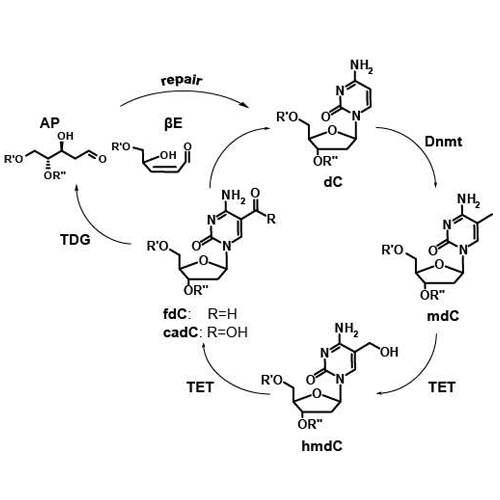5-Hydroxymethyl-, 5-Formyl- and 5-Carboxydeoxycytidines as Oxidative Lesions and Epigenetic Marks
2021-03-26
Florian Schelter, Dr. Angie Kirchner, Dr. Franziska R. Traube, Dr. Markus Müller, Prof. Dr. Wolfgang Steglich, Prof. Dr. Thomas Carell
The four non-canonical nucleotides in the human genome 5-methyl-, 5-hydroxymethyl-, 5-formyl- and 5-carboxydeoxycytidine (mdC, hmdC, fdC and cadC) form a second layer of epigenetic information that contributes to the regulation of gene expression. Formation of the oxidized nucleotides hmdC, fdC and cadC requires oxidation of mdC by ten-eleven translocation (Tet) enzymes that require oxygen, Fe(II) and α-ketoglutarate as cosubstrates. Although these oxidized forms of mdC are widespread in mammalian genomes, experimental evidence for their presence in fungi and plants is ambiguous. This vagueness is caused by the fact that these oxidized mdC derivatives are also formed as oxidative lesions, resulting in unclear basal levels that are likely to have no epigenetic function. Here, we report the xdC levels in the fungus Amanita muscaria in comparison to murine embryonic stem cells (mESCs), HEK cells and induced pluripotent stem cells (iPSCs), to obtain information about the basal levels of hmdC, fdC and cadC as DNA lesions in the genome.








